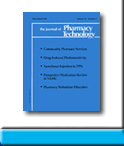 |
 |
IMPLEMENTATION OF AN ALGORITHM FOR INTRAVENOUS PANTOPRAZOLE: IMPACT ON PRESCRIPTION COMPLIANCE IN QUEBEC UNIVERSITY HOSPITALS
Julie Blouin, Pierre-Louis Désaulniers, Lydjie Tremblay, Pierre Poitras, Alice Dragomir, and Sylvie Perreault
To request full article click here.
BACKGROUND: Intravenous pantoprazole is used at Centre Hospitalier de l’Université de Montréal (CHUM) for the adjuvant treatment of nonvariceal upper gastrointestinal bleeding (UGB) and for inhibiting acid secretion among patients unable to tolerate oral intake (NPO). Since it was added to the CHUM formulary, the use of intravenous pantoprazole has steadily increased, and at times it has been used without endoscopic documentation of a nonvariceal UGB or even when the patient could have received a proton pump inhibitor orally.
OBJECTIVE: To assess the impact of an algorithm for intravenous pantoprazole on prescription compliance.
METHODS: Using a pre–post intervention specification, the use of pantoprazole was audited on a retrospective (January 1, 2002, to April 30, 2002) and prospective (January 1, 2003, to April 30, 2003) basis. We reviewed the medical records of all patients having received intravenous pantoprazole during these periods, assessing the compliance of prescriptions as specified by the algorithm. Cost of therapy and the step-down regimen were also reviewed.
RESULTS: In total, 150 patients were identified in the retrospective phase and 109patients in the prospective phase. The subjects were organized into 2 groups: UGB and NPO. In the UGB group, rates of compliance with indication, dose, and duration of treatment in the retrospective phase were 8.8%, 76.5%, and 58.8%, respectively; the corresponding rates for the prospective phase were 26.5% (p < 0.01), 80.9% (p = 0.53), and 69.1% (p = 0.78), respectively. The total rates of compliance (including indication, dose, and duration) were 4.4% in the retrospective phase and 11.8% in the prospective phase (p = 0.12).
In the NPO group, the rate of compliance at the initiation of pantoprazole was 42.7% in the retrospective phase and 36.6% in the prospective phase (p = 0.51). The cost of noncompliance with the indication in the UGB group was estimated at $12 270 CDN (in the retrospective phase) and $7829 (in the prospective phase). In the NPO group, the cost figures were $8048 (retrospective phase) and $5929 (prospective phase).
CONCLUSIONS: This study demonstrates that intravenous pantoprazole is being used in a suboptimal manner in our institution. Despite explicit criteria for use, in the prospective phase, we observed only 11.8% total compliance in the UGB group and 36.6% compliance at the initiation of pantoprazole in the NPO group. Even though these results were not statistically significant, in the prospective phase, we saw improvement in most compliance rates.
J Pharm Technol 2006;22:261-70.
To request full article click here.
|
|
|
||
|

